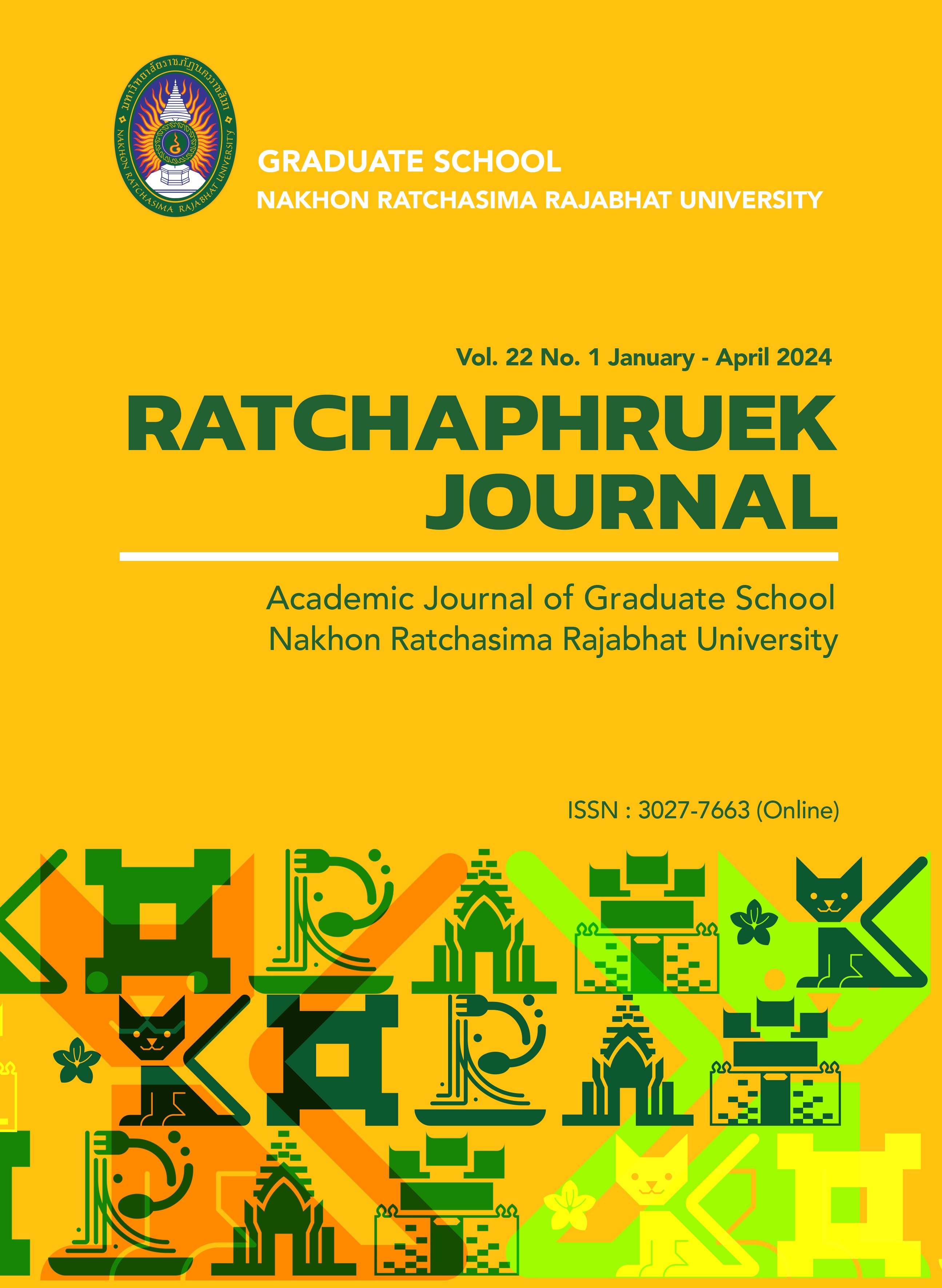Digital Quotient of Students at Nakhon Ratchasima Rajabhat University
Main Article Content
Abstract
The objectives of the study were: 1) To study on digital media using behavior and digital quotient; and 2) To compare digital quotient categorizing by gender, students’ year, faculty, and academic achievement. The samples were 480 students who enrolled in weekday classes at Nakhon Ratchasima Rajabhat University. They were selected by using proportional stratified random sampling technique. The data analyzed by descriptive statistics, t-test, and One-way ANOVA.
The results showed that they often used digital media per day (32.71%), digital media usage time is in the evening most (31.89%). The majority of them used facebook (10.74%), and the purpose of using digital media at a very high frequency were watching movie and listening to music most (29.58%). The results identified that their digital quotient was quite high (= 3.81). There was no significant difference in digital quotient when comparing by gender, and students’ year. However, when comparing in the aspect of their faculty, and academic achievement there were different at the significant level of .05.
Article Details

This work is licensed under a Creative Commons Attribution-NonCommercial-NoDerivatives 4.0 International License.
References
กรมสุขภาพจิต. (2560). สำรวจพฤติกรรมเสพติดเกม. สืบค้นเมื่อ 10 ธันวาคม 2563, จาก https://dmh.go.th/news-dmh/view.asp?id=26433
นัฐิยา พัวพงศกร. (2563). เผยสถิติเด็กไทยถูก “ไซเบอร์บูลลี่” หนัก! ค่าเฉลี่ยติดอันดับโลก. สืบค้นเมื่อ 20 มิถุนายน 2563, จาก https://teroasia.com/news/194261?ref=news
บุญชม ศรีสะอาด. (2554). การวิจัยเบื้องต้น (พิมพ์ครั้งที่ 9). กรุงเทพฯ: สุวีริยาสาส์น.
พระมหาสายัณห์ เปมสีโล, สำราญ ศรีคำมูล และสนิท วงปล้อมหิรัญ. (2566). การศึกษาความฉลาดทางดิจิทัลของนักศึกษาระดับปริญญาตรีในศตวรรษที่ 21 มหาวิทยาลัยมหามกุฏราชวิทยาลัย วิทยาเขตมหาวชิราลงกรณราชวิทยาลัย. วารสารรัฐศาสตร์ มหามกุฏราชวิทยาลัย, 3(3), น. 71-90.
พัชญ์สิตา เหลี่ยมทองคำ และนมิดา ซื่อสัตย์สกุลชัย. (2561). พฤติกรรมการใช้สื่อสังคมออนไลน์ของนักศึกษาในรายวิชาปฏิสัมพันธ์ระหว่างมนุษย์กับคอมพิวเตอร์. ใน การประชุมวิชาการระดับชาติ ด้านนวัตกรรมเพื่อการเรียนรู้และสิ่งประดิษฐ์ ครั้งที่ 2 (น. 115-123). ปทุมธานี: มหาวิทยาลัยเทคโนโลยีธัญบุรี.
พัทธนันท์ เสนาจักร และลักขณา สริวัฒน์. (2563). การศึกษาความฉลาดทางดิจิทัลในระดับการใช้เทคโนโลยีดิจิทัลในเชิงสร้างสรรค์ของนักเรียนโรงเรียนสารคามพิทยาคม อำเภอเมือง จังหวัดมหาสารคาม. วารสารการบริหารและนิเทศการศึกษา มหาวิทยาลัยมหาสารคาม, 11(1), น. 31-44.
มหาวิทยาลัยราชภัฏนครราชสีมา, สำนักส่งเสริมวิชาการและงานทะเบียน. (2564). จำนวนนักศึกษา. สืบค้นเมื่อ 30 สิงหาคม 2564, จาก https://apro.nrru.ac.th/
วลัญชพร ทุ่งสงค์ และลักขณา สริวัฒน์. (2562). การศึกษาความฉลาดทางดิจิทัลในระดับความเป็นพลเมืองดิจิทัลของนักเรียน ชั้นมัธยมศึกษาตอนต้น โรงเรียนสารคามพิทยาคม อำเภอเมือง จังหวัดมหาสารคาม. วารสารการบริหารและนิเทศการศึกษา มหาวิทยาลัยมหาสารคาม. 10(3), น. 19-34.
สำนักงานพัฒนาธุรกรรมทางอิเล็กทรอนิกส์. (2563). รายงานผลการสำรวจพฤติกรรมผู้ใช้อินเทอร์เน็ตในประเทศไทย ปี 2563 Thailand Internet User Behavior 2020. กรุงเทพฯ: ผู้แต่ง.
DQ Institute. (2019). Digital Intelligence. Retrieved December 10, 2020, from https://www.dqinstitute.org/wpcontent/uploads/2019/10/DQGlobalStandardsReport2019.pdf
Hair, J. F., Black, W. C., Babin, B. J. & Anderson, R. E. (2014). Multivariate Data Analysis (7th ed.). Essex: Pearson Education.
Hatlevik, O. E., Ottestad, G. & Throndsen, I. (2015). Predictors of Digital Competence in 7th Grade: A Multilevel Analysis. Journal of Computer Assisted Learning, 31(3), pp. 220-231.
Stiakakis, E., Liapis, Y. & Vlachopoulou, M. (2019). Developing an Understanding of Digital Intelligence as a Prerequisite of Digital Competence. MCIS 2019 Proceedings. (pp. 1-14). Naples, Italy: AISel.


